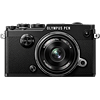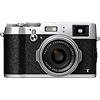Main
Model
Price
Advantages
launch
Announced
Body type
Camera subcategory
Sensor
Effective pixels
Max resolution
Sensor size
Sensor type
Processor
Image ratio w:h
Sensor photo detectors
Other resolutions
Image
Boosted ISO (minimum)
White balance presets
Custom white balance
Image stabilization
Image stabilization notes
Uncompressed format
JPEG quality levels
ISO
Boosted ISO (maximum)
Photography features
Minimum shutter speed
Maximum shutter speed
Maximum shutter speed (electronic)
Aperture priority
Shutter priority
Manual exposure mode
Subject / scene modes
Built-in flash
External flash
Flash modes
Continuous drive
Self-timer
Metering modes
Exposure compensation
AE Bracketing
WB Bracketing
Flash range
Screen / viewfinder
Articulated LCD
Screen size
Screen dots
Touch screen
Screen type
Live view
Viewfinder type
Viewfinder coverage
Viewfinder magnification
Viewfinder resolution
Videography features
Resolutions
File Format
Videography notes
Microphone
Speaker
Optics & Focus
Autofocus
Manual focus
Number of focus points
Lens mount
Focal length multiplier
Focal length (equiv.)
Optical zoom
Maximum aperture
Digital zoom
Normal focus range
Macro focus range
Physical
Weight (inc. batteries)
Dimensions
Environmentally sealed
Battery
Battery details
Battery Life (CIPA)
Storage
Storage types
Connectivity
USB
HDMI
Microphone port
Headphone port
Wireless
Wireless notes
Remote control
Other features
Orientation sensor
Timelapse recording
GPS
Samples
Videos
Summary
The X100T has bigger sensor than the PEN-F: APS-C (23.6 x 15.8 mm) versus Four Thirds (17.3 x 13 mm). It is very significant difference between these cameras as big sensor lets you to shoot photos of the higher quality. The PEN-F has image stabilization which will allow you to shoot blur-free pictures when the camera is moving around a lot. The PEN-F offers more focus points in compare with the X100T: 81 vs 49. More focus points means less risk of losing focus lock during tracking a moving object.
The PEN-F is equipped with articulated LCD that will let you to make amazing selfies. The X100T display is better as it has more screen dots 1,040,000 in compare to 1,037,000 dots of the PEN-F display. The higher dot count display is better for reviewing pictures on your camera. The PEN-F is equipped with a touch screen. The PEN-F provides better lowest (60 seconds) and highest (1/8000 second) shutter speeds.
The X100T is equipped with built-in flash. The PEN-F weighs 427g which is 13g lighter in comparison with the weight of the Fujifilm X100T.
Taking into account the above-mentioned differences the Olympus PEN-F will become the best choice. Check the list of the best offers on Amazon.


